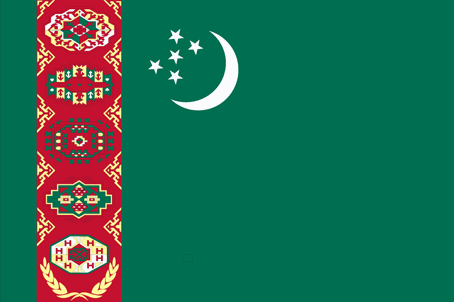
Turkmenistan is largely a desert country with intensive agriculture in irrigated oases and sizeable gas and oil resources. The two largest crops are cotton, most of which is produced for export, and wheat, which is domestically consumed. Although agriculture accounts for roughly 7% of GDP, it continues to employ nearly half of the country's workforce. Turkmenistan's authoritarian regime has taken a cautious approach to economic reform, hoping to use gas and cotton export revenues to sustain its inefficient and highly corrupt economy. The government introduced a privatization plan in 2012, but the implementation of this initiative has been slow. Privatization goals remain limited. From 1998-2005, Turkmenistan suffered from the continued lack of adequate export routes for natural gas and from obligations on extensive short-term external debt. At the same time, however, total exports rose by an average of roughly 15% per year from 2003-08, largely because of higher international oil and gas prices. Additional pipelines to China, that began operation in early 2010, and increased pipeline capacity to Iran, have expanded Turkmenistan's export routes for its gas. Overall prospects in the near future are discouraging because of endemic corruption, a poor educational system, government misuse of oil and gas revenues, and Ashgabat's reluctance to adopt market-oriented reforms. The majority of Turkmenistan's economic statistics are state secrets. The present government established a State Agency for Statistics, but GDP numbers and other publicized figures are subject to wide margins of error. In particular, the rate of GDP growth is uncertain. Since his election, President BERDIMUHAMEDOW unified the country's dual currency exchange rate, ordered the redenomination of the manat, reduced state subsidies for gasoline, and initiated development of a special tourism zone on the Caspian Sea. Although foreign investment is encouraged, and some improvements in macroeconomic policy have been made, numerous bureaucratic obstacles impede international business activity.
$55.16 billion (2013 est.)
country comparison to the world: 95
$49.18 billion (2012 est.)
$44.27 billion (2011 est.)
12.2% (2013 est.)
country comparison to the world: 3
11.1% (2012 est.)
14.7% (2011 est.)
$9,700 (2013 est.)
country comparison to the world: 122
$8,800 (2012 est.)
$8,000 (2011 est.)
agriculture: 7.2%
industry: 24.4%
services: 68.4% (2013 est.)
30% (2004 est.)
9% (2013 est.)
country comparison to the world: 204
8.5% (2012 est.)
2.3 million (2008 est.)
country comparison to the world: 116
agriculture: 48.2%
industry: 14%
services: 37.8% (2004 est.)
60% (2004 est.)
country comparison to the world: 199
natural gas, oil, petroleum products, textiles, food processing
8% (2013 est.)
country comparison to the world: 27